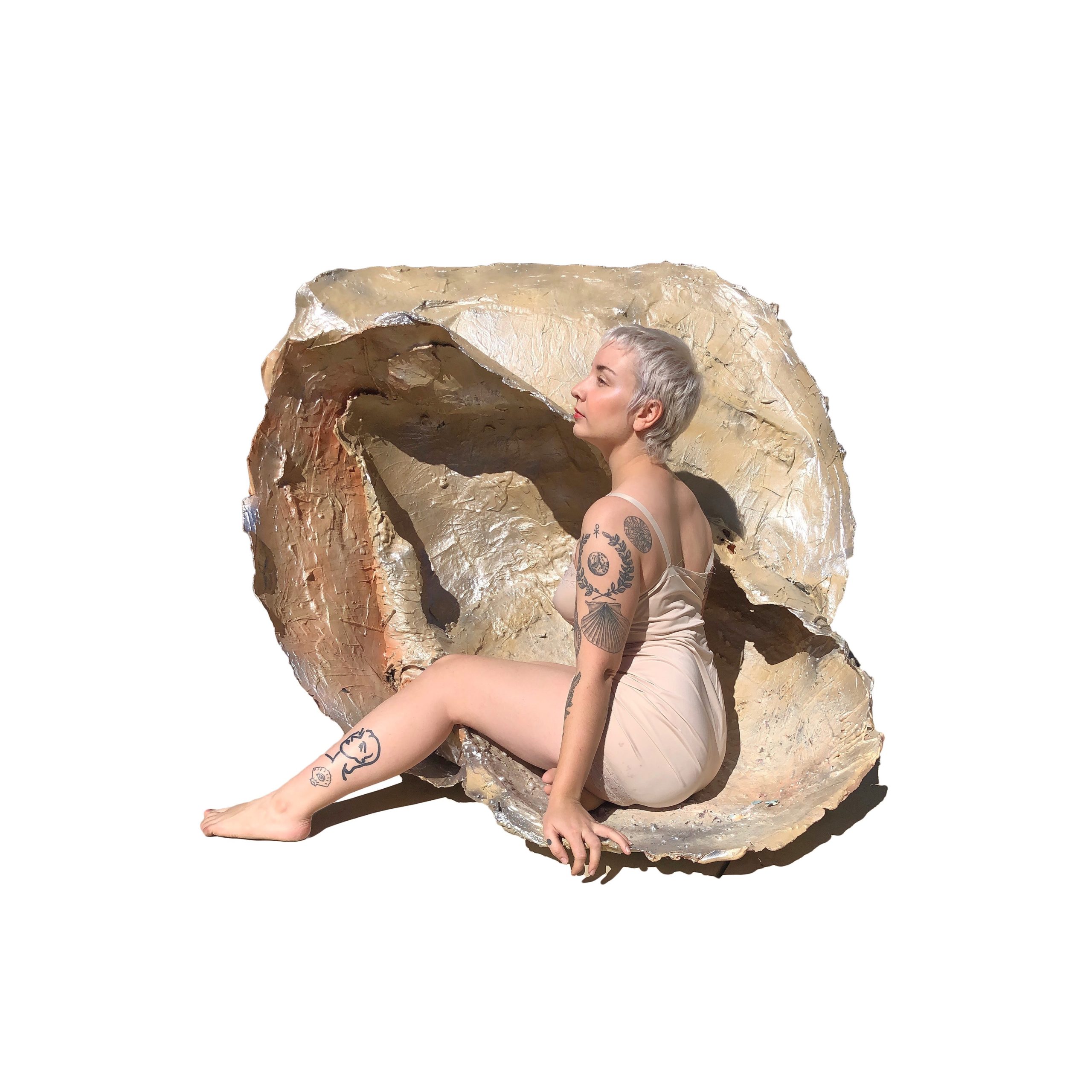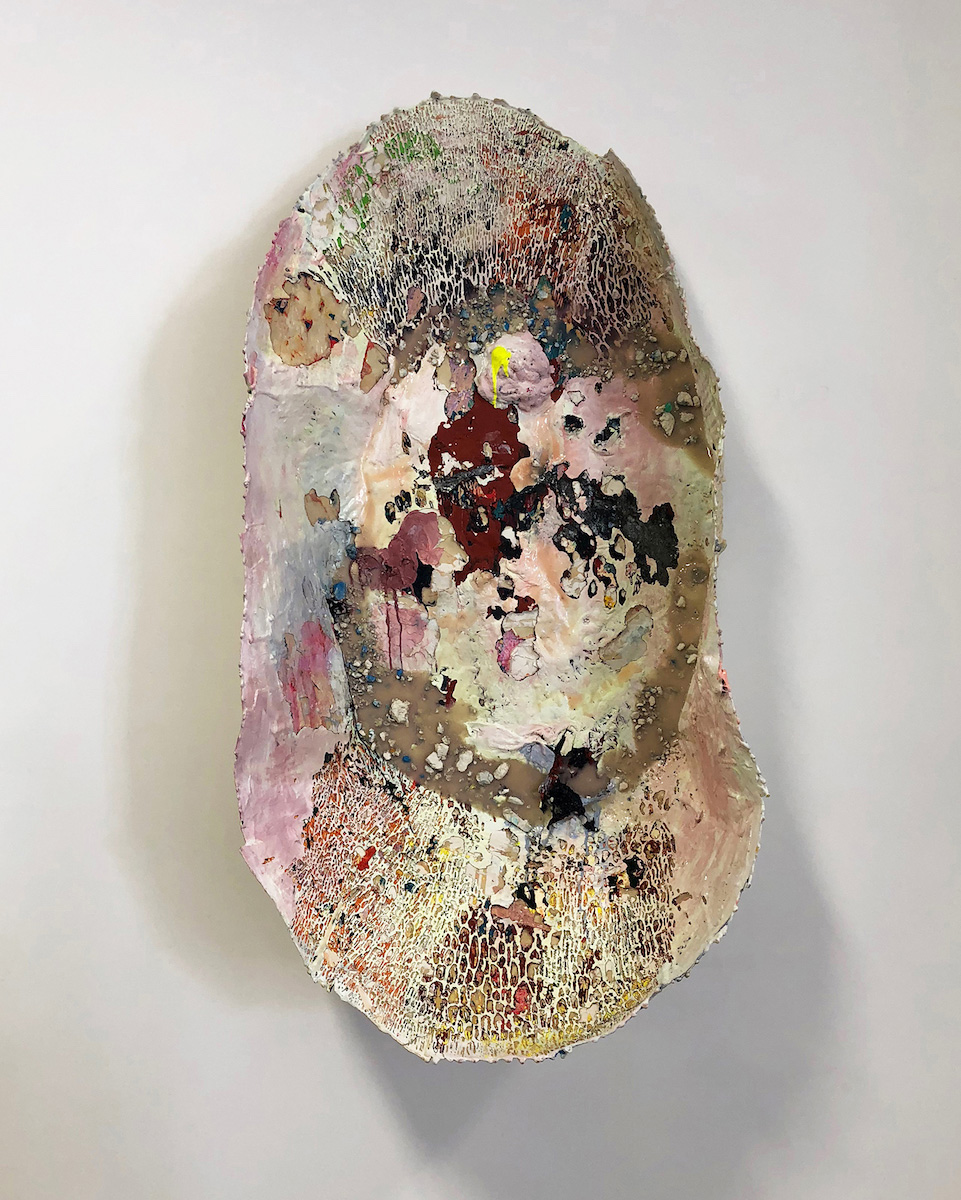“That act of focusing and running my hand through piles of rocks, it stills everything spinning in me.”

Some say “scavenging”; coast-dwellers call it “beachcombing”. Laura Catherine Soto is a mixed-media sculptor with a penchant for fleshy pastels, flaky shells and discarded bric-a-brac found on the seashores of the CCC (California Central Coast; homophobic pun intended). Born in San Diego, Soto’s youth saw her cultivating “a curiosity for these broken, luminous, alien remnants” and finding cathartic empowerment in “manipulating material through building and breaking” as well as “the alchemy of accumulating surface and weathering”. After taking up Studio Art at Biola University in La Miranda in her native state, she has since exhibited her work everywhere from the Leiminspace in Chinatown, LA, to the Galleria Salvatore Lanteri in Milan. Making regular use of materials such as resin, paper and acrylics, Soto’s formula relies on instinct and trial-and-error, and she often has a difficult time “not deconstructing ‘finished’ work”. Beyond the finished article, it’s apparent she loves what she does: hunting for treasure. Some scout for models, most scout for girls, but perhaps we’d all be happier scouting for shells on the beach like Soto…

In a highly digital world, you seem to be sticking to the tangible. Why is that?
Tangible work holds my attention and grounds me in ways that digital can’t. I find working with my hands very meditative.
There is something captivatingly organic about your art. Is this a reflection of your creative process?
Completely. I begin with a vague direction when building the forms, usually concerning size or the space it will be installed in. Everything from there on out is the alchemy of accumulating surface and weathering it. I abandon a lot of control to whatever material is at hand and play with discordant substances.
What space do you feel safest in to create?
My studio is the obvious answer… my jars of ephemera and stockpiles of material are all there. It is a monastic space for me full of sacrament and ritual.
It seems like the materials you use comprise one of the key components of your art. Is that true, and why (not)?
Since my processes are focused on attending to and manipulating material through building and breaking down surface, this is certainly true. On the other hand, I don’t hold any one material too precious. I may return to certain devices regularly (resins, paper, acrylics) but am never above disrupting and evolving what I used to lean on.

As an artist, what are some of the core themes or thoughts that drive you?
Growing up I would beachcomb along the California Central Coast. I cultivated a curiosity for these broken, luminous, alien remnants I was collecting. When I began working with process-based abstraction I realized that I was chasing that same perplexing delight.
Do you think your work will ever transcend into the virtual world?
Never say never, no material is really out of bounds. That being said, the most arresting and compelling aspects of my work come across in person. There’s a visceral immediacy to the surfaces that can’t be entirely conveyed until you are face to face with a piece.
Trial-and-error seems to be a crucial part of evolving your art. However, sometimes you can’t help but experience an artistic block. What is your way of coping with that?
When I’m about to hit an artistic block, it’s because I am in my head too much and need to busy my hands. Taking a walk and combing the streets for stray pieces of concrete or asphalt is always a sure way to spark my curiosity. Ordering new materials from nontraditional suppliers. Burning, breaking, ripping, carving, peeling, hammering an old piece into fragments to be used in something else.
How important do you think it is to lose the fear of destroying what you have created? Do you believe that sometimes the disassembly/destruction of something you physically created is more important than the actual creation of it?
I can hardly tell you where the line between “creation” and “destruction” is. I’m not sure there is one. Fear is of no use. This process of amassing surface/sediment only to turn around and excavate/weather it, allows me to purge fear. Something interesting will happen one way or another, but holding back won’t get me there.
Do you have an overall goal that you are working towards?
It’s easier to have a goal in my mind’s eye when working with the smaller subjects. When I’m engulfed in one of the immersive shells, I have to abandon any end goal and focus in on whether what’s happening right in front of me is interesting. If it is, then keep doing it. Does it feel self-conscious or repetitive? Try something else. They might take years to resolve. I have a difficult time not deconstructing “finished” work.
If you had to find another term for the word ‘nurture’, what would it be?
Cultivate.
What is the most important “thing” for you to nurture?
Curiosity and empathy.
Is taking care of Planet Earth and safeguarding our future in any way a part of your practice? If so, how?
It wasn’t something I consciously integrated but, since I do care about protecting Earth, has found its way into my process nonetheless. The majority of material I use is either found, spoiled, broken, or recycled. Any new material I buy, I use every aspect of. I save all my scraps and ephemera and fold them back into the work. I do my best to waste as little as possible.
How do you nurture yourself? Are there any self-care routines we should know about and/or follow?
Studio time is meditative and prayerful for me. Another nurturing practice is beachcombing. That act of focusing and running my hand through piles of rocks, it stills everything spinning in me.
